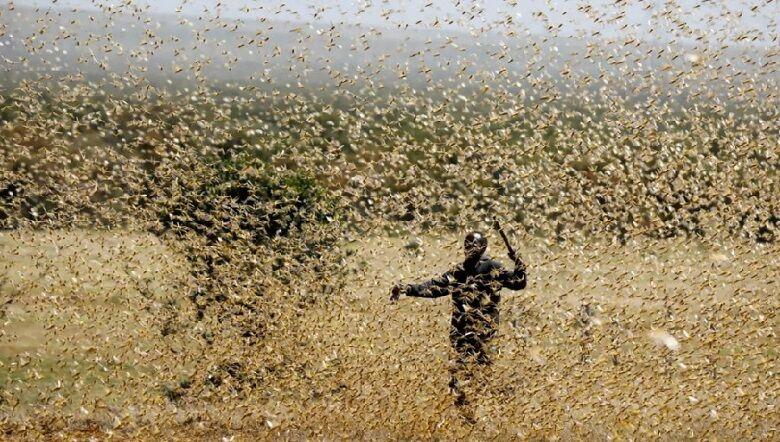(Trinidad Express) have arrived by the swarms in Siparia, thousands flying through Coora Road and Quarry Village over the past few days.
Videos of the insects moving through the sky in their masses were shared with the Express yesterday as residents said they were unsure of how to handle the issue.
Throughout the year, locusts have passed through various parts of South Trinidad, blanketing homes and destroying crops in the process.
In March, 69-year-old Tabaquite resident June Sewlal told the Express that her home had been overwhelmed.
“I opened my front door and I thought it was fine ‘jeps’ and when I saw my whole front wall was plastered with locusts, I said, ‘but what is this?’”
In June, a Rio Claro farmer said: “The locusts are out in their thousands again in Rio Claro. Farmers really do have it difficult when it comes to pests destroying their crops or, in other words, their income. Hope my fellow farmers don’t get affected much by these pests and that they just pass through and don’t stay long.”
The insects have since been seen in Princes Town, Penal Rock Road and other areas.
Siparia Regional Corporation chairman Dinesh Sankersingh told the Express that although he had heard of the swarming, he had not yet validated how many insects were present in Siparia. He said a team was investigating the matter.
The Ministry of Agriculture, Land and Fisheries (MALF), he added, is on the job and spraying to aid the community.
In March, the ministry stated that it had intensified its efforts to address the impact of the Moruga grasshoppers (Moruga locusts) population. Pest control management strategies were boosted by dedicated teams at four county offices to address the issue, it said.
Surveillance and containment strategies were being used.
“Currently, MALF’s containment strategies target the locusts’ one-year life cycle. During this period, the ministry undertakes vigilant surveillance activities to detect, contain and destroy the pest. Targeted spraying of chemicals using mist blowers and boom sprayers is utilised along the perimeter of the infested forests to destroy the locusts at their most vulnerable (hopper) stage,” it said.

